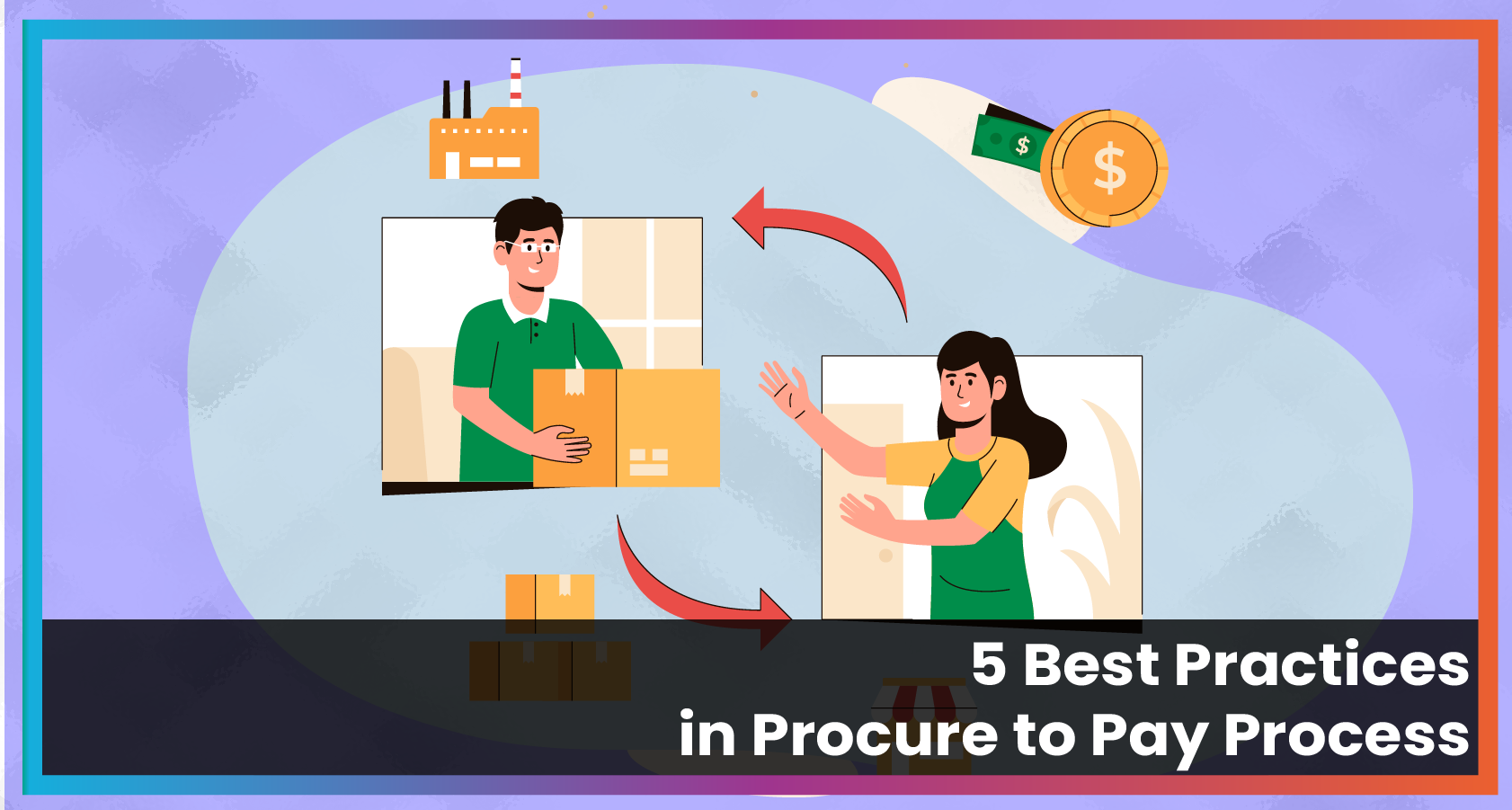5 Best Practices in Procure-to-Pay (P2P) Process
Posted On: Oct 20, 2023
In a holistic journey of a business operation, the Procure-to-Pay process empowers organizations to elevate the efficiency and excellence of their supply chain procedures, all while maintaining the capacity to expand their business seamlessly.
It helps organizations to become more financially efficient by controlling costs, ensuring compliance, maintaining efficient operations, and fostering positive relationships with vendors. It also contributes to the overall financial health and growth of the organization.
What is Procure-to-Pay, P2P?
P2P, or Procure-to-Pay, is a comprehensive business process encompassing all steps in acquiring goods or services, from the initial procurement request to the final payment to vendors/suppliers. So, whether it is a manufacturing, retail, or any industry, embracing P2P isn't just a choice; it's the key to unlocking cost savings, supplier reliability, and a streamlined operation that keeps you ahead in this competitive business landscape. From purchase requisitions to invoice processing, P2P serves as the essential bridge that turns requirements into concrete assets.

Five Best Practices for P2P Process
It's crucial for businesses to focus on enhancing their P2P processes to foster growth and enhance vendor relationships. Hence, here are some of the best practices that can enable organizations to oversee the procure-to-pay function effectively.
- Visible & Active Communication: The P2P process relies heavily on collaboration and cross-functional teamwork. All the departments and individuals must have a clear understanding of their specific roles and duties. Additionally, nurturing positive vendor relationships holds significant importance. Ensure continuous, transparent communication regarding requirements, purchase orders, and invoices. Be sure to set forth well-defined expectations with the vendors from the beginning. By actively engaging with your vendors, you're not just buying products or services but investing in relationships that drive your business forward. Frequent and meaningful communication can result in better products, improved service, and cost savings.
- Adapt Automation Process: Embracing an automated workflow can revolutionize business operations by simplifying several critical processes. One of the key components of this automation is a streamlined vendor onboarding system, making it hassle-free for new vendors to integrate into the network. Furthermore, it facilitates the creation of purchase orders and requests for quotation (RFQ) with unmatched efficiency. However, implementing a three-way matching system is one of the most significant advantages. This automated process ensures that purchase orders, invoices, and receipts align seamlessly, reducing errors and discrepancies and ultimately promoting a more accurate and cost-effective procurement process. By adopting this comprehensive automation strategy, organizations can boost productivity, reduce manual workloads, and enhance procurement and vendor management accuracy.
- Centralized vendor payment & contract management: Why scatter your vendor payment and contract management across a web of disconnected systems when you can streamline and centralize it? Vendor-related transactions and contractual agreements can be organized in one centralized hub—efficiency and clarity like never before. With centralized vendor payment and contract management, organizations can effortlessly track and process payments, keep tabs on vital contract milestones, and easily ensure compliance. No more juggling between different tools and platforms. It's a smart move that simplifies the business operations, enhances control, and empowers the organizations to build stronger vendor relationships.
- Enhance inventory visibility: Visibility is one of the crucial elements in the success of a P2P (Procure-to-Pay) process. Having the right information about inventory availability, identifying the products you need to source, and keeping a precise count of purchases can make a huge difference. With real-time access to records, purchase orders, and technical specifications, the organization can ensure complete transparency in the procurement process. As a result, the business gains invaluable insights, elevates record management, makes a seamless shift towards strategic purchasing, and reduces costs.
- Monitor vendor Performance: Monitoring vendor performance across a spectrum of crucial metrics is essential. An organization ensures accountability and strengthens the foundation of successful vendor relationships by regularly assessing factors like on-time delivery, responsiveness, commitment, and margin. Monitoring these key performance indicators allows them to measure the efficiency and reliability of the vendors, helping them make informed decisions and adjustments or negotiate where necessary. This data-driven approach can pave the way for improved vendor relationships, enhanced product or service quality, and a more efficient and cost-effective procurement process.
How Partner Portal Will Help in the P2p Process
The advent of digital technology has significantly transformed the Procure-to-Pay process. Utilizing solutions such as Partner Portal, companies can now leverage automation to eradicate inefficiencies and safeguard their financial health. This technology empowers various business locations to promptly and effortlessly procure the necessary supplies, contributing to enhanced operational efficiency and cost control. Partner Portal, a cloud-based vendor management system, is a centralized and automated solution for the procurement process. It offers features of easy onboarding, generating purchase orders and invoices, tracking shipments in real-time, and automated billing solution. With Partner Portal, businesses can automate end-to-end procurement and scale it up or down to meet their needs.